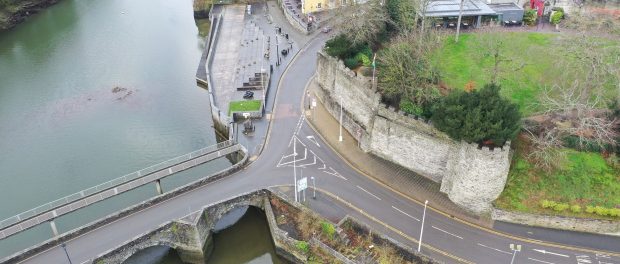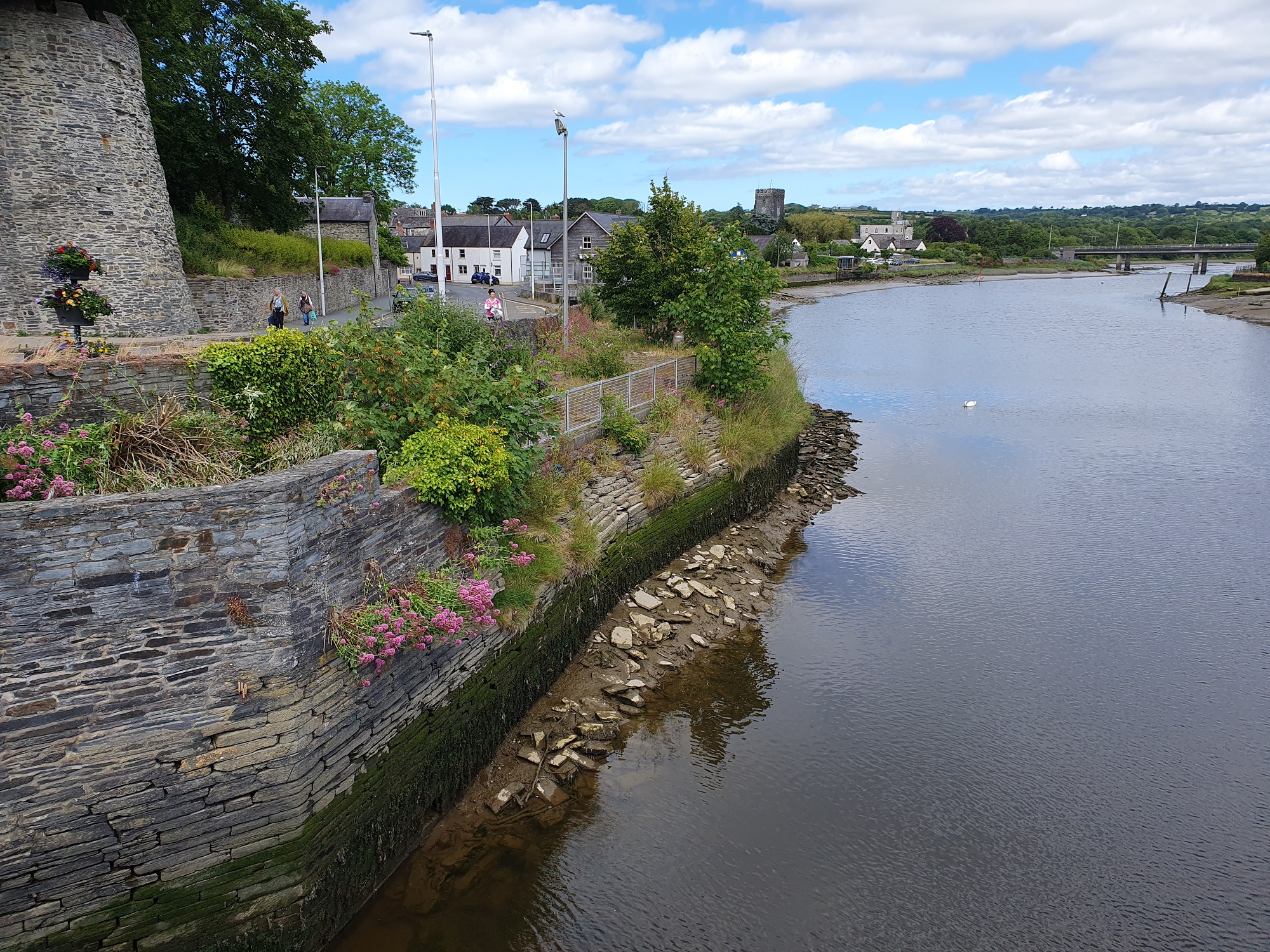Cardigan Tidal Flood Risk Management Scheme adds biodiversity element to flood defence project

Homes and businesses will benefit from reduced flood risk as part of the Cardigan Tidal Flood Scheme, the West Wales project that also aims to enhance biodiversity and contribute to community life.
Natural Resources Wales (NRW) has appointed Binnies, an RSK Group company, to bring a range of skills to the project in Cardigan, in the county of Ceredigion, as part of its efforts to manage the risk of tidal flooding to approximately 90 properties in the area. The project is currently in the detailed design phase.
Binnies will support NRW with civil engineering design, including geotechnical and structural design, environmental assessment, landscape visual impact assessment, hydraulic modelling and planning and consenting support. Fellow RSK Group companies will work with Binnies, with Central Alliance assisting with services surveys and RSK Acoustics providing a noise impact assessment.
Binnies Project Director Alex Humphreys said:
“The tidal flood risk management scheme in Cardigan would help the town become more resilient to the effects of climate change and ensure it remains a prosperous and thriving community long into the future. The scheme will generate additional beneficial outcomes by creating new public realm areas, increasing opportunities for the community to be connected with their river, which is one of the most iconic in Wales, known for its historical significance and rich wildlife, including species such as salmon, sewin (sea trout), otter and porpoise.”
Alex said that the new flood defence would reduce flood risk to approximately 90 homes and businesses in Cardigan. The primary flood risk is tidal flooding within the River Teifi that flows through the town. The scheme is being designed to provide protection against a tidal flood that has a one in 200 chance of occurring within any one year period, with an allowance for climate change.
He said the new flood wall will stretch from the historic Cardigan Bridge to Gloster Row car park: a length of over 300 metres. Steel sheet piles will form the main stem of the wall, which will appear approximately 1.5 to 2 metres tall from the land-side.
Alex said: “Sections of the sheet piles would be clad in materials that would be sympathetic to the existing environment, while contributing to the narrative of continued investment and development in a thriving community. Along with the sheet piles, the scheme could see a new riverside embankment created, which would utilise imported natural rock material to enhance the stability and resilience of the wall.”
This rock would be placed in combination with bioengineering products to soften the visual appearance and create habitats along the river corridor.
He added: “The scheme involves many complex challenges, including the proximity of existing buildings, a number of important habitats along the river frontages and the significant heritage value of the setting. These sit alongside the typical challenges of construction in a busy town, minimising disruption to residents and the general public and working around complex layouts of buried utilities, such as sewers and water mains.
“We strive to support NRW in delivering its corporate objectives and its commitment to Sustainable Management of Natural Resources (SMNR) and the Well-being of Future Generations (Wales) Act 2015. We have looked at ways that we can maintain and enhance the community’s connection with the river. NRW is engaging with local businesses and community groups, including the local Sea Scouts, and is working to ensure access to the river for people of all abilities is enhanced.”
Alex went on to say: “I personally take a lot of satisfaction from projects like this, which showcase how the role of the civil engineer has evolved to take its place among a wide variety of skilled environmental and scientific professionals committed to combatting the effects of climate change and leaving the planet in a better state than the one that we found it in.”
NRW’s project executive for the scheme, Paul Isaac, said:
“We are pleased to continue our collaboration with Binnies, whose expertise – along with ours – will enable us to produce a scheme that not only addresses the increasing flood risk but also creates long-term value for the community and environment.”



